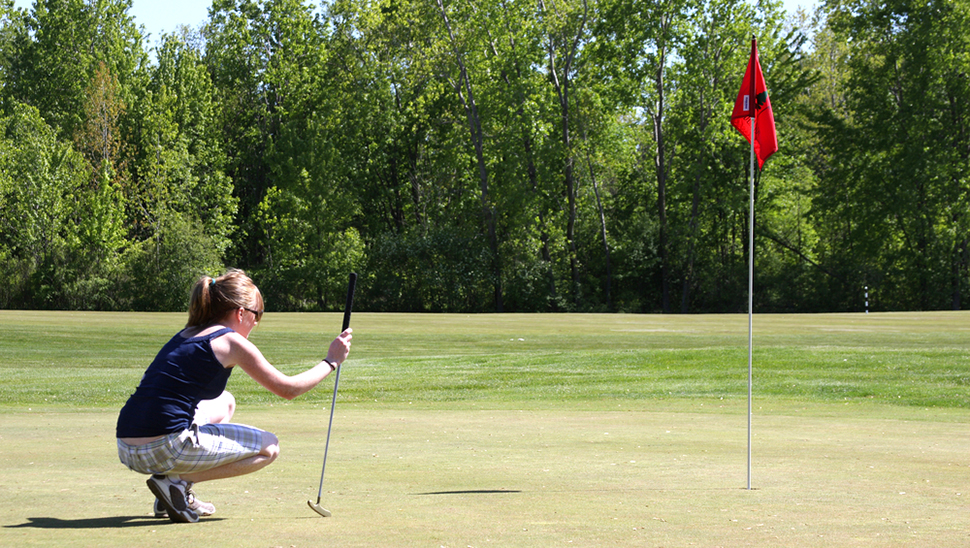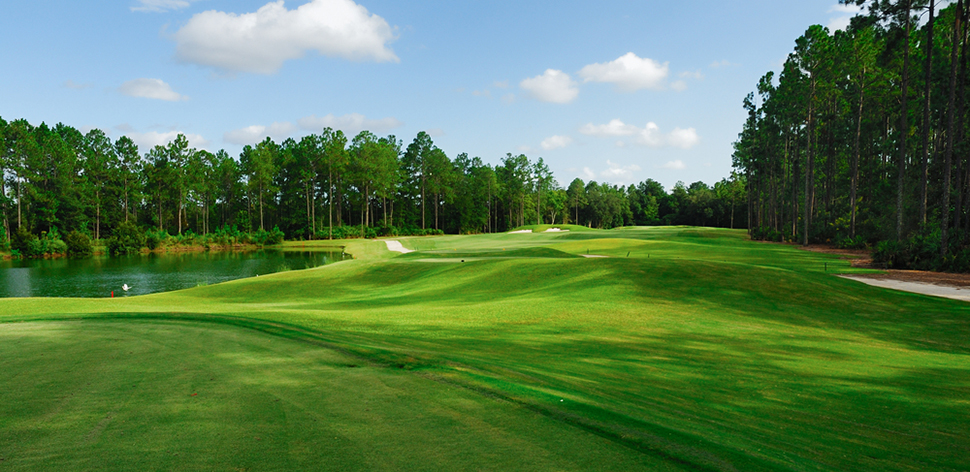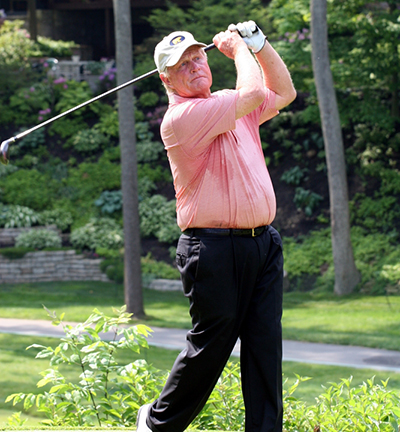Top College Golf Courses in America
Jun 27th 2018

If you love golf but you're new to the game, you might not know there are many golf courses tucked away on college campuses across the U.S. If you've been playing for a while and are feeling a little tired of airing your clubs on the same old tracks, these hidden gems can give you some refreshing new options.
Usually maintained in tip-top condition and often located on beautiful settings, there is nothing second-rate about these courses. The major downside is that some of them are private, meaning you'll need to befriend a student or alumna to play there. Without further ado, here are our picks of the top college golf courses in the U.S.

Springdale Golf Club at Princeton
Springdale Golf Club on the beautiful Princeton campus is a private club and one of the oldest in New Jersey, established in 1895. "The Dale" was originally designed by Gerard Lambert, and it was revised in 1926 by William Flynn. The old clubhouse had been a farmhouse belonging to Stockton Farm when it was built around 1860, and it was a gift from the Princeton Class of 1886. A new clubhouse was opened in August 2007, and the course was re-routed accordingly.
The well-groomed fairways and fast greens offer challenging play that is complemented by outstanding views. It has a par of 71 and 6,380 yards from the blue tees, with a course rating of 70.5 and a slope of 131. The peaceful course is designed to be walkable, so if you are lucky enough to be invited to enjoy a round here, you can leave your golf cart at home. A driving range, putting green and chipping area add to the amenities, and the staff are friendly, approachable and generous with tips for tackling the more challenging holes.


The Course at Yale
Yale's tricky course, planned by Charles Blair Macdonald and Seth Raynor in 1924, is a lovely example of early American links design. In 2010, Golfweek named it the best campus course in the United States, and in 2011 Golf Magazine named Yale Golf Course #71 of its Top 100 courses in the United States.
Located on a 700-acre wooded tract gifted to Yale by Mrs. Ray Tompkins in memory of her husband, its rolling fairways and well-protected and heavily bunkered greens make it a challenge for golfers of all levels. The generous acreage enabled a thoughtful design on a grand scale that incorporates a wealth of natural features, such as outcroppings, hills, streams and lakes. Many of the holes are similarly bumper-sized, with several greens in excess of 10,000 square feet.
Two of the holes, the fourth and the ninth, have been ranked among the 100 most difficult holes in the world. The 432-yard par-4 fourth requires an initial drive of 250 yards alongside a daunting water border that curves back into the fairway to trap those who overshoot. The green for the fourth is also slightly elevated, requiring a perfectly executed recovery shot from the deep front bunker.

The 238-yard par-3 ninth is the course's signature hole and demands a precise 190-yard carry over water to the front section of the green from the tee. The 65-yard deep "Biarritz" green is bunkered to the right and left and features an eight-foot depression separating the front and back. If the ball reaches the depression or ends up in the bunkers, the player faces a very difficult two-putt.
The current clubhouse was opened in 2015 and has a contemporary design with high ceilings and soaring windows that deliver matchless serene views of the New Haven area. Facilities include a well-stocked pro-shop, gourmet dining room and extensive conference facilities. If you want to play here, you'll have to buddy up with a Yale student, employee or member — or gather together a group of 100 friends for a private Monday booking.

Pennsylvania State University - Blue and White
Situated near State College in the famous "Happy Valley" of Central Pennsylvania, Penn State maintains two outstanding golf courses, the Blue and the White, named for the school colors. The layout of the courses began in 1921 when two university professors, Bob Rutherford and R.D. Pryde, laid out the groundwork for the first nine holes of the White course, with golf course architect Willie Park Jr. designing an additional nine holes by the end of 1926.
Both courses are open to the public. The White course was renovated in 2005 and offers elevation changes and small crowned greens closely guarded by multiple bunkers. It demands a creative approach to short play. The par 72 Blue course was renovated in 2006 and extended by 640 yards. The front and back nine offer different experiences by design. The front nine demand expertise with target golf, rewarding precision and accuracy. The back nine brings to mind a links-style course with fairway bunkers, water hazards and large undulating greens.
Amenities include a well-stocked pro shop, customized golf carts for hire and a popular driving range.


Virginia Tech - Pete Dye River Course
In 2006 the renowned golf course architect Pete Dye completely redesigned the Virginia Tech course so that the scenic New River would run through the entire two-and-a-half-mile track with the clubhouse perched on top of a 70-foot rock cliff overlooking the first, ninth, 10th, and 18th holes. It's the view from the clubhouse that makes this public course truly stand out.
In fact, the course itself, while beautifully maintained, is atypical for a Dye design, with a wide-open links-style feel, mounds flanking the fairways and very few trees or obvious hazards, making it inviting for newer players. The key Dye touch is in the sightlines off the tees, which are characteristically deceptive.
Located between Blacksburg and Radford, the flowing layout and views make for a very pleasant day out on the links. The course is compact enough to make it supremely walkable, so you can leave your golf cart at home.

University of Wisconsin - University Ridge
University Ridge is a public golf course overlooking the city of Madison that is operated by the University of Wisconsin. It was designed by Robert Trent Jones Jr. and opened in 1991. Named after the landscape features left behind by the retreat of the Wisconsin Glacier, the course follows the natural contours of the terminal moraine that forms the ridge that separates the landscape into distinct areas of hills and valleys.

The course is set up for tournament play and offers five sets of tees with total yardage varying between 5,005 and 7,289 yards, promising a challenge for players of every ability level. The first nine holes have an open feel and wind through grassy areas of prairie and marshland. There is an abrupt change for the first six holes of the back nine, which are carved out of dense woodland.
The 554-yard signature 16th hole showcases more open terrain featuring three fairways and 16 bunkers. All the holes are straightforward, making this a course where you can enjoy a traditional round of golf. Additional amenities include a huge driving range, a short game practice area and a substantial putting green.

University of North Carolina - UNC Finley Golf Course
The original golf course at UNC Finley was designed by George Cobb and opened in 1949. Then it was completely redesigned by Tom Fazio and re-opened in 1999. The par 72 public course includes five sets of tees playing at 7,328 yards from the Tar Heel Tees and 5,017 yards from the red tees. The way the tee boxes are set up, the longer yardages make playing from these tees significantly more challenging, with much more difficult angles onto the fairway and far more obstacles and obstructions.

Typical Fazio features include false fronts and greenside bunkers. All holes offer different risk/reward opportunities with the final three holes being particularly challenging — and enjoyable, as they are set in an especially scenic stretch of the track.

Duke University Golf Club
The Duke University Course is a public course located in Durham, N.C. It was designed by Robert Trent Jones Sr. and later renovated by Rees Jones. Opened in 1957, this course is built on a gently rolling 120-acre site in the North Carolina Piedmont that features some unusual elevation changes, meandering streams and groves of hardwoods and towering pines. Robert Trent Jones Sr. has said that the philosophy of the design is in harmony with the original natural landscape and intended to create the impression that "the golf holes were on the ground, just lying there, waiting to be grassed over."
The flowing layout features beautifully manicured sloped fairways and well-protected elevated and undulating greens that tend to run fast. There are doglegs left and right, water on several holes and a mix of short and long par fours while the par fives offer opportunities for the skilled and the lucky to be on the green in two.
The club’s extensive amenities include a driving range, six putting and chipping greens, seven sand bunkers and eight target greens. The tee boxes offer plenty of options, and the huge driving range provides a useful practice area. The course can be walked in most conditions, but GPS-equipped golf carts are also available if you prefer to ride. Cart hire can be expensive, so consider bringing your own.

Stanford Golf Course
Stanford Golf Course was designed in 1930 by the famous golf course architects William Bell and George C. Thomas. Located in Paolo Alto in the foothills above the Stanford University campus, the course is consistently rated one of the finest in the world. The par 70 course is private and only open to current faculty, staff, students, members, alumni and their guests.

The layout is meandering, natural and beautiful, incorporating ancient oak trees and the San Francisquito Creek within its design. The par-4 sixth is a tricky hole requiring a carry over the creek, so you either need a strong drive or an outstanding second shot. The 12th hole is one of the most difficult in Northern California, with two large trees located in the middle of the fairway. The 18th tee offers spectacular views of San Francisco and the entire Bay Area, including distant views of the Golden Gate Bridge on clear days.

Ohio State Golf Club - The Scarlet

The Ohio State University Golf Club, located in Columbus, has two 18-hole courses: the short-play Gray and the Scarlet, which is rated as one of the top collegiate courses in the nation. The club is semi-private and only open to those with an Ohio State University affiliation.
The Scarlet was designed by Alister MacKenzie and completed in 1938. In 2006, it underwent a major restoration project overseen by former Buckeye Jack Nicklaus, who focused on restoring the course to the way the original designer had intended it to play.
The bunkers, including the extensive fairway bunker complexes, were redesigned and significantly deepened to appear more like the classic MacKenzie designs at other courses, and the course was also lengthened and adjusted to a par 71.
From the championship tees, the course now stretches out into 7,455 yards of rolling terrain that incorporates a nine-and-a-half-acre lake and Turkey Run Creek. As a result, three of the front nine holes play over the lake, and five of the back nine cross over the creek and include some dramatic elevation changes. Carts are a good idea. If you bring your own, check your golf cart batteries first as the distances from the back tees make walking a real workout.

University of Texas Golf Club
The University of Texas Golf Club is a private 7,412-yard, par-71 championship-caliber golf course designed by Bechtol Russell Golf Design and opened in 2003. Located at Steiner Ranch in the Texas Hill Country, this beautiful course overlooks Lake Austin and borders the Balcones Natural Wildlife Preserve.
The track features a little of everything. You'll come across some great risk/reward opportunities, many elevation changes requiring you to club up or down, a few scary forced carries, some complex approach shots and holes that require just all-round thoughtful course management.
The fairways are tight, contoured and sloping, while the greens are on the smaller side, making the accuracy of your approach shots paramount. The bunkers are varied, ranging from deeply lipped pot bunkers to sprawling-but-shallow monsters. If you end up in the rough, you're likely to be deep in the trees and brush, so bring plenty of spare balls.
The practice area features a full-acre chipping and pitching area, a 14,000-square-foot putting green, a vast driving range, three bunkers and a wedge-only tee area.
